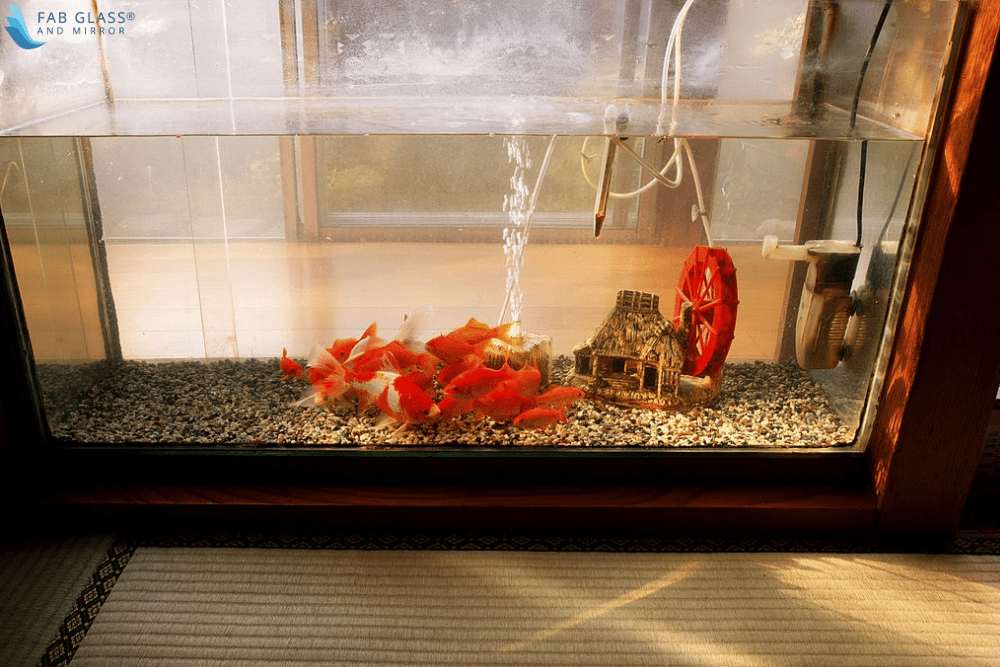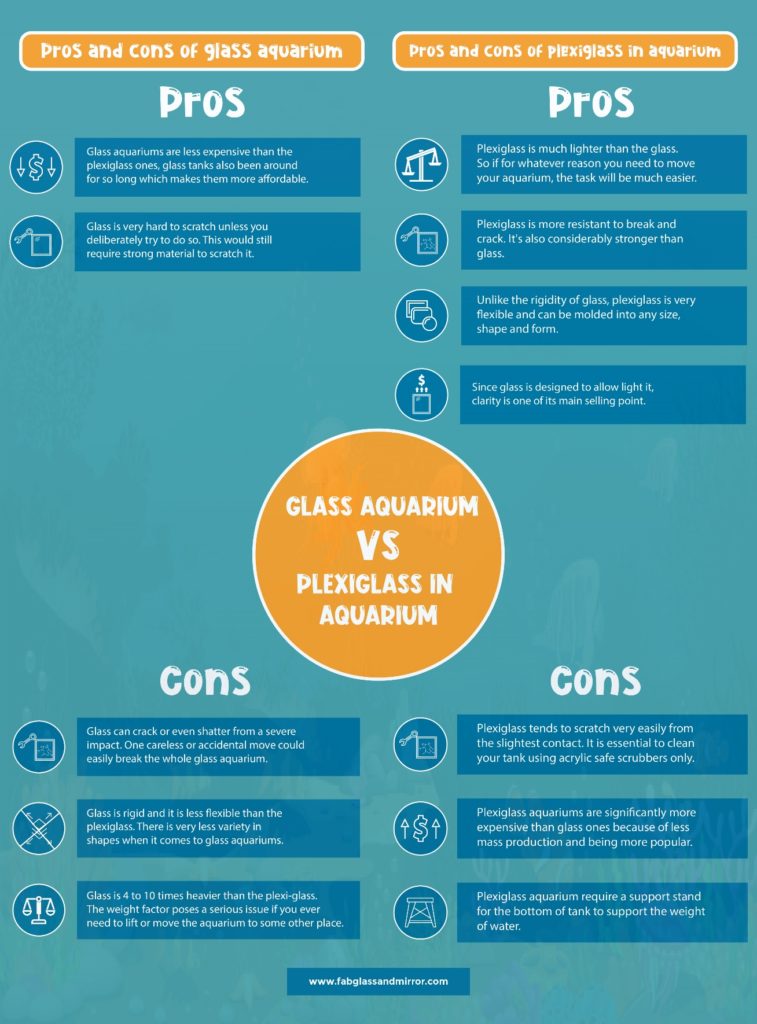For any fishkeeping enthusiasts, choosing the right type of aquarium entails a series of questions and research. Once, all aquariums were exclusively made of glass; there are many options available nowadays. One of those suitable options is named as plexiglass or acrylic aquariums. However, most fish keepers don’t know that much about each type and what it’s best suited for. So let’s examine the dilemma of glass aquarium vs plexiglass aquarium to find out which one is recommended for you.
Types of Aquarium
Glass fish tanks are widely popular within the aquarist’s community, mainly since they’re more affordable and more resistant to scratching. With that said, some manufacturers produce cheaply made glass tanks, which can be defective, and result in leaks and even breakage. So it’s always necessary to find a reputable and trustworthy manufacturer before you make your purchase. You can also consider acrylic vs glass aquarium as well.
Plexiglass tanks, on the other hand, are much lighter than their glass counterparts. This is one of the many reasons why they’re that much more appealing to fish keepers and aquarists. They come in several shapes and sizes, and they’re easier to handle. Be that as it may, cheap acrylic sheets are more prone to scratching, not to mention, very expensive.
Which Material You Should Consider for Aquarium – Comparative analysis
|
Glass |
Plexiglass |
|
| Cost | Less expensive | More Expensive |
| Weight | 4 to 10 times heavier | Much lighter |
| Scratching | Very difficult to scratch | Highly scratch able |
| Breaking/Cracking | More prone to crack or shatter due to sharp impact | Better resistance to heavy impacts |
| Shape | Not much variety in options | More flexibility (material can be molded into any shape) |
| Clarity | Maintains its clarity over time | Yellows with age (especially when exposed to sunlight) |
Pros and Cons of Glass Aquarium
Pros of Making Aquarium:
Cost:
glass fish tanks are less expensive than plexiglass ones, particularly since the shipping costs are much lower. Glass tanks have also been around for so long and are available in higher quantities which makes them much more affordable. However, plexiglass aquariums become cheaper than glass if you’re buying a really large tank, considering the weight and shipping fees.
Scratch resistance:
glass is very hard to scratch unless you deliberately try to do so. This would still require a strong material and a substantial amount of pressure. So it’s very unlikely that you will scratch your glass tank during cleaning, maintenance, or even accidentally.
Clarity:
Since glass is designed to allow light in, clarity is one of its main selling points. Glass tanks won’t wither or yellow with time, they will also maintain their transparency and beauty over the years.
Cons of Making Glass Aquarium:
Substandard impact resistance:
although this isn’t an everyday occurrence, glass can still crack or even shatter from a severe impact. One careless or accidental move could easily end up harming your fish and costing you more on damage control.
Limited shapes:
glass is kind of rigid which makes it much less flexible than plexiglass. This means there is less variety in shape options when it comes to glass tanks. Plus, curved glass tends to distort light, which will affect the way you see the fish inside.
Denser and heavier:
Glass is 4 to 10 times heavier than plexiglass. The weight factor poses a serious issue if you ever need to lift the tank or move it somewhere else. Whereas plexiglass tanks are more manageable, even with water inside.
Pros and Cons of Plexiglass Aquarium
Pros Using Plaexiglass in Aquarium:
Lightweight construction:
plexiglass tanks are much lighter than their glass counterparts. So if for whatever reason, you need to move your aquarium, the task will be a lot easier to handle. This also means your tank will put less strain on the support stand and structure.
Strength:
plexiglass is a great deal more resistant to breaking and cracking, it’s also considerably stronger than glass. Although the material is prone to scratching, it can withstand substantial pressure and heavy impacts.
Variety:
Unlike the rigidity of glass, acrylic is very flexible and can be molded into any size, shape, and form. Hence the variety of options when shopping for plexiglass aquariums.
Cons Using Plaexi:
Poor scratch resistance:
plexiglass tends to scratch very easily from the slightest contact. It’s also essential that you clean your tank using acrylic safe algae scrubbers only.
More expensive:
acrylic tanks are significantly more expensive than glass ones. The reason behind this is very simple: since glass tanks are more popular and mass-manufactured, this cuts down on production costs.
Requires a support stand:
acrylic aquariums require a support stand for the bottom of the tank to support the weight of the water.
Which one will best serve as your fish tank?
While both glass and acrylic have their pros and cons, choosing one over the other solely depends on your needs. If you’re looking for a really large tank (more 150 gallons), then plexiglass is your best bet. But if you’re just about to dip your toes in the fishkeeping world, glass tanks are the way to go. Since a bigger tank won’t be the go-to choice for most beginners, a traditional glass aquarium will do.
Why you should go for plexiglass aquarium?
When you weigh the pros and cons of each material, Plexiglas comes out a winner. A tank made from the acrylic sheets is much easier to handle because of its light weight. And although there’s the issue of scratching, you can always get an acrylic polishing kit to remove any scratches. Plexiglas also has great workability so it’s easier to drill and it’s much more flexible than glass.
Not to mention insulation and better heat dispersion compared to glass, which means more energy efficiency and lower heating costs. Plus, you also get a variety of options when it comes to shapes and sizes. So, you don’t have to go for the standard square or rectangular aquarium. Plexiglas bends light twice as less as glass, so no need to worry about image distortion that curved glass creates.


